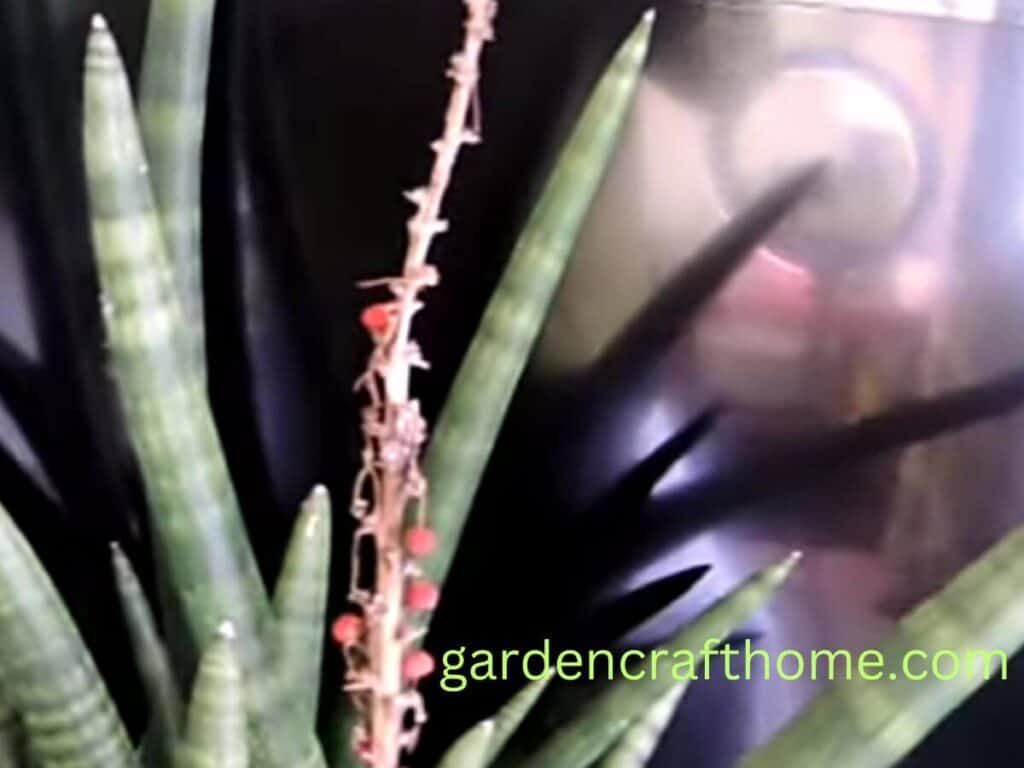How to grow snake plant from seed may seem like a complex task, But snake plans can be cultivated by harvesting your plant seed and peeling off the fruit Of the seed.
Before planting the Snake, plant the seed in seed starting mix soil.
The snake plant, also known as Sansevieria, is a common houseplant that requires little maintenance when properly cared for.
It has been a typical query, ‘Can you grow snake plants from seed?’ yes, Snake plants can be grown from seed.
I will guide you through planting snake plants from seed in this article.
If you are not satisfied with growing snake plants from seeds, there are other ways of doing this. Learn the best 4 ways to grow a snake plant effectively.
Materials Needed to grow snake plant from seed
How to grow snake plant from seed, you will need the following materials:
- Snake plant seeds
- water
- Seed starting mix
- Pots or containers
How To Grow Snake Plant From Seed Step-by-Step Guide
How To Grow Snake Plant From Seed Step 1: Preparing Snake Plant Seed for Planting
Snake plant seed can be obtained in two ways:
- Purchasing it from a market such as Amazon or any plant-specialized business.
- Harvesting your snake plant seed when it is grown and dry or when Raping.
Snake plant takes a couple of years before they can be producing seed.
If you what to know how to make your Snake plant produce seeds learn how to make your snake plant grow seeds by flowering.
In this article, we decided to use our rape Sansevieria seed [snake plant seed] that will be harvested from our existing snake plant.
This method is straightforward, cheap for beginners, and requires minimal stress and effort.
After harvesting your rape Sansevieria seed, immediately remove the seed from the fruit and thoroughly rinse it with water in a basin.

Wash carefully as Sansevieria fruits contain chemicals that can disseminate through the earth, attracting pests and causing seed decay.
Wash your hands thoroughly because the seeds of snake plants are poisonous to both adults and children.
How To Grow Snake Plant From Seed Step 2: fill the container with the Seed starting mix in a well-draining container with openings that allow extra water to escape easily.
Snake plant seedlings necessitate a nutrient-rich, well-draining potting mix. Blend equal amounts of perlite, peat moss, and vermiculite to blend.
How To Grow Snake Plant From Seed Step 3: Sow Snake Plant Seeds in the soil: Make a hole in the soil with your finger, chopstick, or pencil,
make the hole half an inch deep, and carefully position the seed inside.
Plant numerous seeds in case some do not survive, and space your seeds apart in the pot or divide the seeds in a different pot.

Note: Don’t dip the seeds too deep because the seed is tiny.
How To Grow Snake Plant From Seed Step 4: Water the snake plant seed in the soil, carefully using pure or distilled water, and keep it moist.
After watering, position the plant in a bright area, preferably near a window or in indirect sunlight.
Note: Please remember that watering the snake plant should be done weekly. Snake plants can live in dry soil, which makes them desirable. Only water the plant when the topsoil is dry.
To be safe from over-watering, deep your finger 1 and 1/2- 2 inches to feel the moisture. If it feels dry, then water is but avoid over-watering.
How To Grow Snake Plant From Seed Step 5: Take Care of Snake Plant Seedlings;
Flourishing snake plant seeds require bright, indirect light and constant moisture.
Maintain an even moisture level in the earth, but avoid overwatering, which can lead to root decay.
If you want to know how to avoid Overwatering plants, this post How do I water my bonsai Tree explains how to check soil moisture levels for all plants.
If you’re developing seedlings under grow lamps, leave them on for 14-16 hours daily. Move your seedlings daily to guarantee even development if they develop near a window.
How To Grow Snake Plant From Seed Step 6: Transplanting Snake Plant Seedlings
Once your snake plant seedlings have grown to a few inches tall and have developed several leaves, they are ready to be transplanted into individual pots.
Also learn:
the best type of bonsai tree for beginners
Introduction to Bonsai For Beginners
How Long Does It Take To Grow A Snake Plant From A Seed?
How to grow snake plant from seed Snake plants are sluggish to grow, taking a few weeks to months to grow from seed.
The seedlings can take anywhere from three to six weeks to grow.
After germination, the plant typically takes 3 to 6 months to develop, based on growth circumstances and the particular variety of Sansevieria.
Seedlings develop slowly and need constant care, such as regular watering, adequate illumination, and nutrient-rich soil.
As a result, patience is required when growing snake plants from seed. Take your time because impatience can cause you to discard your seedlings before they have grown.
Are Snake Plants (Sansevieria) Easy To Grow?
Snake plants (Sansevieria) are generally considered easy to cultivate and low-maintenance plants that can survive in various growing conditions.
It makes them a popular option for novice and experienced plant managers looking to begin cultivating.
How Do You Make Snakeplant Grow Faster?
Snake plants can only develop quicker if certain conditions are met.
It can aid in increasing the pace of growth of your snake plant, which encompasses the following;
Are you interested in a healthy diet? also read:
the advantage of cucumber with a healthy recipe
What Is The Important Of Mango In the Human Body
Selecting The Correct Pot Size:
If you select the proper container size when planting or repotting your snake plant.
Planting snake plants in smaller containers allows them to develop more quickly.
The Appropriate Amount Of Water
Snake plants are perennials with fleshy foliage that can hold water. So Watering too frequently can cause root rot and limited development.
It is best to wait until the topsoil is completely dry between waterings. Also, prevent overhead irrigation from keeping foliage dry.
Sunlight
The process of photosynthesis is essential for vegetation. Snake plants enjoy indirect light that is vibrant.
As a result, putting the plant in a bright or well-lit area can help it thrive.
An illuminated location does not receive direct sunshine and does not require tube lighting during the day.
It is the finest option for the snake plant.
Fertilize Regularly
Snake plants are not big feeders, so feeding them with an NPK ratio of 10-10-10, though other ratios may be helpful, is recommended.
It is once every 4–6 weeks. On the other hand, full-strength fertilizer is far too potent for this plant variety.
Avoid Pests
Look for indications of an insect invasion. Infestations of pests can harm and impede the development of your snake plant.
Soil
Snake plants require well-draining, mildly acidic soil.
A proper combination of peat moss, perlite, and sand soil can provide ideal growth circumstances for your snake plant.
Go in-depth by learning What helps snake plants grow faster.
How Long Do Snake Plants Live?
Snake plants known as Sansevieria are known for their longevity and toughness.
The snake plant can survive for 5 to 10 years to 15- 25 years or longer with appropriate care and maintenance, based on how the plant owner cares for them.
According to records, some snake plants must survive for several decades.
A snake plant’s lifetime can differ based on variables such as the level of care it gets, environmental circumstances, and the plant’s species or cultivar.
Conclusion
After learning how to cultivate a snake plant from seed, it is essential to understand that snake plants require water, but not frequently or daily.
They should be watered approximately once a week.
Snake plant seeds can take several weeks to sprout, so be patient with your Sansevieria because it grows slowly.
Remember to select a suitable spot for the plant.
Another helpful post:
What helps snake plants grow faster
why is my snake plant flowering





